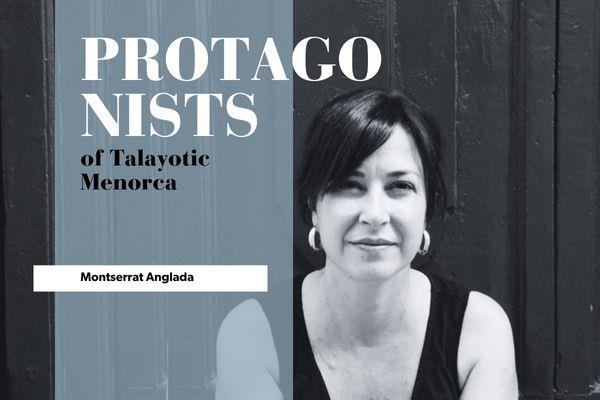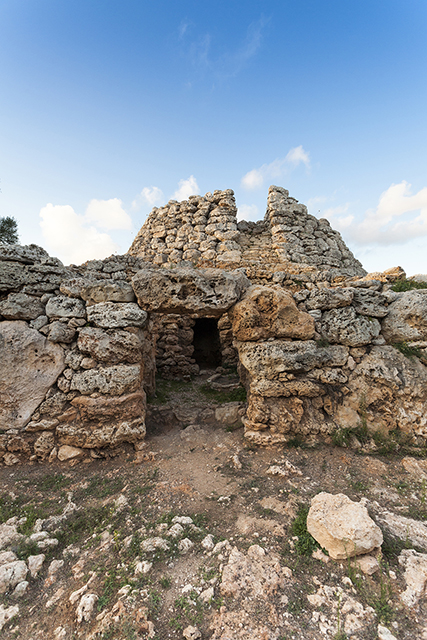 Montserrat Anglada is an archaeologist specialising in historical heritage conservation and works as a technician at the Museu de Menorca. She is a member of the Governing Council of the Talayotic Menorca Agency. Since 2001 she has worked on various archaeological projects in Menorca, Mallorca and Catalonia. Her research has focused on the prehistory of Menorca and she has been part of the management teams of the of Cornia Nou project (Maó), Projecte Entre Illes (Es Coll de cala Morell in Ciutadella and sa Ferradura in Porto Cristo), Sant Agustí Vell (Es Migjorn) and the hypogeum of sa Mola (Alaior). He has also co-directed the projects of Sa Cudia Cremada (Maó) and Talaies de Can Jordi (Santanyí) until 2018.
Montserrat Anglada is an archaeologist specialising in historical heritage conservation and works as a technician at the Museu de Menorca. She is a member of the Governing Council of the Talayotic Menorca Agency. Since 2001 she has worked on various archaeological projects in Menorca, Mallorca and Catalonia. Her research has focused on the prehistory of Menorca and she has been part of the management teams of the of Cornia Nou project (Maó), Projecte Entre Illes (Es Coll de cala Morell in Ciutadella and sa Ferradura in Porto Cristo), Sant Agustí Vell (Es Migjorn) and the hypogeum of sa Mola (Alaior). He has also co-directed the projects of Sa Cudia Cremada (Maó) and Talaies de Can Jordi (Santanyí) until 2018.
What made you decide to study the Talayotic culture?
Honestly, I had no particular predilection for Talayotic culture until I returned from Barcelona, where I studied and then worked. Once I settled in Menorca, I came into contact with the Museu de Menorca and its team. Stimulating projects such as Cornia Nou began to emerge, and I was completely hooked. Nowadays, I am more dedicated to the dissemination and divulgation part of my work as a technician at the Museu de Menorca.
During your career you have worked on several projects related to the Talayotic culture both in Menorca and Mallorca. How important is it to understand the connection between the Mediterranean islands from an archaeological point of view?
Very important. The connection between the Mediterranean islands is a well-known topic in the last centuries of the late Talayotic period. However, there is still a lot of work to be done to find out about the population flows that moved between islands, to what extent Menorca participated in the trade networks of the Bronze Age and the Early Iron Age, and how intensely these exchanges took place. What is clear is that during the Bronze Age, the material culture and architecture of Mallorca and Menorca were very similar, and from 1200-1100 BC, with the beginning of the Talayotic culture, each island began to have its own well-defined characteristics. For example, the talayots of Mallorca and Menorca are very different, or, for example, funerary navetas are built here, while in Mallorca they do not exist. However, we do know, through studies of materials such as metals, that there were commercial exchanges, above all related to the raw materials used to make metal tools. This is a complex subject and there are several teams working on it.
What are the most recent contributions of archaeological research to our understanding of Talayotic Menorca, and which do you find most remarkable?
There are a great many. We have to think that there are currently a dozen research teams on the island carrying out excavation campaigns every year. A few years ago, I would never have thought that was possible! This means that a great deal of progress is being made in our knowledge of the Talayotic culture. I think that the last fifteen years have been key to providing a coherent theoretical basis for the Talayotic Menorca dossier, and there are many researchers from many disciplines who have collaborated. Therefore, the greatest contribution to Talayotic Menorca, in my opinion, has been the archaeological research projects. Without data collection, there are no studies. Nowadays, the number of articles on the prehistory of Menorca has multiplied; some of them can be found in highly respected journals, and this is also an international projection for Talayotic Menorca.
 What is the archaeological importance of Cornia Nou in the context of Talayotic Menorca?
What is the archaeological importance of Cornia Nou in the context of Talayotic Menorca?
Cornia Nou is a key site for understanding the early phases of the Talayotic culture on the island. But I would like to highlight three issues: firstly, it has been possible to document how a talayot was built based on the excavations carried out in 2014 on the upper platform of the western talayot. Secondly, a new type of monumental building for the management and processing of food by an entire Talayotic community was discovered, which has given rise to very interesting studies. And finally, we have dates that place the western talayot between 1200 and 1100 BC, and which have allowed the Cornia Nou team to postpone the beginning of the Talayotic culture to the end of the 2nd millennium, which proposes a new chronological framework for the prehistory of Menorca.
Regarding the Entre Illes project, what are the most important advances that have been made this year?
The Entre Illes project is part of a shared project between researchers from Menorca and Mallorca. We are analysing two prehistoric sites on the coast of the islands: Sa Ferradura (Porto Cristo) and Es Coll de Cala Morell (Ciutadella), both of which are located on walled promontories. In the navetas settlement of Es Coll de Cala Morell this year we completed the excavation of the set of cisterns or water collection basins located in the centre of the settlement. This is the first time such an ancient structure has been excavated - a true work of engineering that is more than 3,500 years old!
How have these two projects contributed to our understanding of Talayotic history?
On the one hand, Es Coll de cala Morell has allowed us to discover an exceptional navetas settlement in an inhospitable place, where a community lived in quite difficult conditions, to protect themselves from other communities living in Menorca. This settlement indicates possible moments of instability between different human groups between 1600 and 1200 BC, when we have dated the abandonment of the settlement. It has been seen that this is not the only navetas settlement that was located in an easily defendable site. In the Algaiarens area there are several navetas settlements on top of hills with defensive walls. There’s still a lot to discover!
On the other hand, Cornia Nou is changing the paradigm and places the beginning of the Talayotic culture around 1200 and 1100 BC. From that same period we have a good funerary record thanks to the Cova des Càrritx, Cova des Pas and now also Biniedrís. With Cornia Nou we have discovered a complex of buildings related to the living spaces of the early Talayotic period (1200-600 BC).
At the end of November a new campaign will start in Sant Agustí. What are your long-term objectives?
This year marks the beginning of a new five-year period, and a room that is being excavated just before the entrance to the corridor that leads to the interior of the "ses vigas de mata" talayot must be finished. In the long term, the project's plan is to excavate the South Building attached to the talayot, which preserves part of the roof. Fascinating!
Now that we are a World Heritage Site, what challenges do you think lie ahead for Talayotic Menorca?
Basically the management of this World Heritage Site, which is the work that UNESCO has entrusted to us, not only to the institutions but to Menorca as a whole. We must also see how it can be instrumentalised in relation to cultural tourism. On the other hand, the archaeological research teams are working quite precariously; there is a lack of infrastructure. In this sense, the Talayotic Menorca Agency should play a key role.